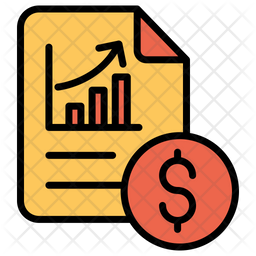
Global Artificial Blood Market 2020 (Includes Business Impact of COVID-19)
- TBI39138
- April 29, 2020
- Global
- 149 pages
- Market.US
“Global Artificial Blood Market” is the title of an upcoming market research report at Trusted Business Insights. The market has been studied in depth to present vital data and information, including revenue shares of each segment, region, and country, revenue growth driving factors, and restraints. In addition, potential revenue opportunities in untapped regions and economies are included. Key players and their details are presented in the company profile section of the report. The section comprises revenue details and financial information, recent developments, strategies, acquisitions & mergers, and geographic reach as well as footprint. The global artificial blood market is segmented by product type and regions/countries.
Request Covid - 19 Impact
Overview
Artificial blood is a substitute substance that is used to mimic and fulfill some functions of biological blood. It aims to provide an alternative to blood transfusion. Artificial blood substitutes are produced through chemical procedures with the use of recombinant biochemical technology.
Recent studies across various parts across the globe, have found out that the Hemoglobin-based artificial blood substitutes are the most popular type in the market. These are most sought after oxygen carriers and many key players focusing on increasing the production of these substitutes to expand their market.
Dynamics
The increasing demand for blood with the rise in the number of surgeries as well as the risks associated with blood transfusions such as HIV/AIDS, blood loss, etc. are major factors contributing to the growth of the global artificial blood market. Growing incidences of intraoperative complications and anemia arising from illnesses such as kidney diseases and cancer are other factors leading to an increase in the demand for artificial blood substitutes. As cases of cancer, cardiovascular conditions and other health conditions are escalating, the need for blood donors is gaining traction. However, factors such as a shortage of blood donors as well as the transmission of diseases during surgical procedures are fueling this market’s growth.
Manufacturers are investing in product innovations and improvements of artificial blood substitute properties to increase their consumer bases. For example, manufacturers are developing better oxygen carrier mechanisms in blood substitutes to ensure that the final product is delivered without any side effects. The developers are also making sure that the chances of a patient suffering from neurological damages are reduced after the use of these blood substitutes.
Furthermore, other product variants that are used along with diagnostic procedures to treat strokes such as ischemic stroke are available. Constant improvement in blood substitute properties to cater to diagnostic needs in the healthcare sector is contributing to market revenue growth. Efforts are also being made to enable the development of artificial blood with increased oxygen-carrying capacity by utilizing the support of protein-engineering strategies.
Segment Analysis
By Product Type: Among the product type segments, the Hemoglobin-based Oxygen Carrier (HBOC) segment is expected to account for the majority revenue share over the next 10 years.
Global Artificial Blood Market Regional Analysis:
The market in North America is expected to account for the highest revenue share over the foreseeable future. The markets in the US, Mexico and Canada, are major revenue contributors to the artificial blood market in the region. Increasing spending on healthcare research & development activities, primarily in countries such as the US and Canada, are factors supporting market growth in the region. The demand for artificial blood substitutes is being extended to applications in the military sector of the US as well, especially during critical operations. In addition, the rising prevalence of cardiovascular diseases (CVD) and cancer in Mexico are also contributing to market growth in the region.
Global Artificial Blood Market Segmentation:
By Product Type
HBOC
PFBOC
Table of Contents Chapter 1. Methodology and Scope 1.1. Research Methodology 1.2. Research Scope & Assumptions 1.3. List of Data SourcesChapter 2. Executive SummaryChapter 3. Global Artificial Blood Market Outlook 3.1. Market Segmentation 3.2. Market Size and Growth Prospects, 2016 - 2027 3.3. Value Chain Analysis 3.4. Market Dynamics 3.4.1. Market driver analysis 3.4.2. Market restraint analysis | read more...



















